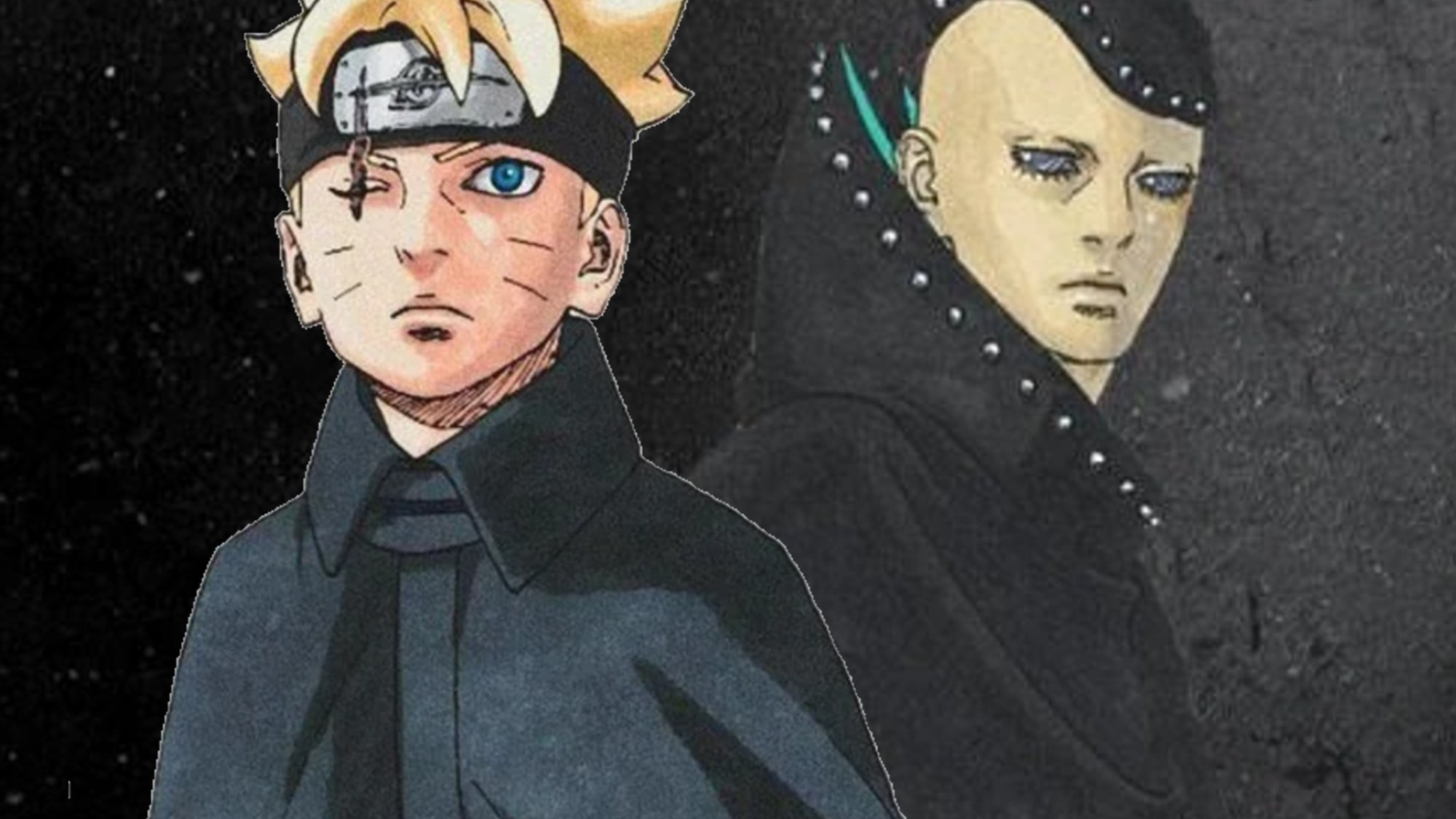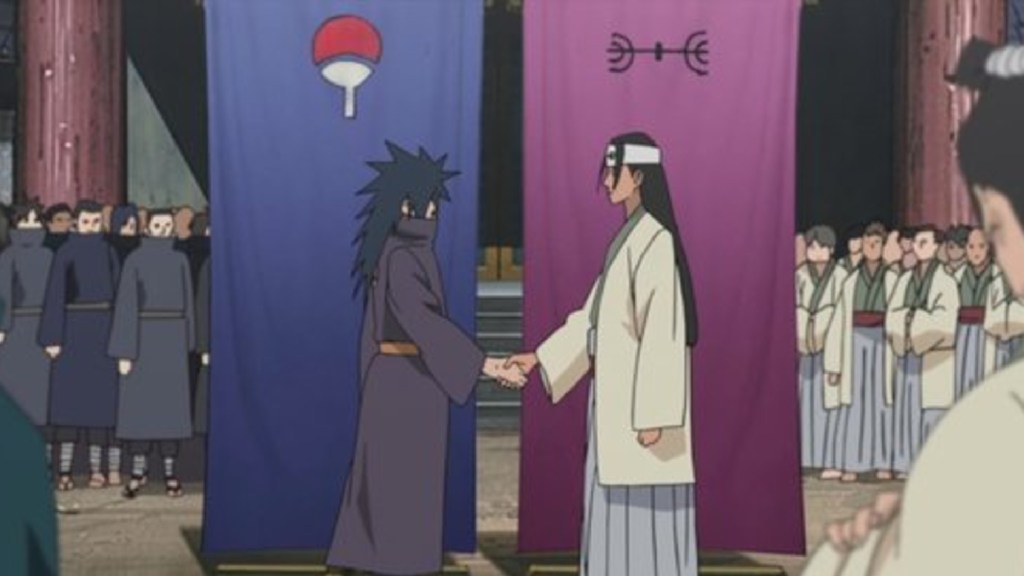
The latest chapters of Boruto: Two Blue Vortex confirm that the series is looking to turn up the heat on one of Naruto‘s most fundamental concepts. Naruto is renowned for its emphasis on love and communication over violence, an idea so prevalent that it led to Naruto birthing the “Talk no Jutsu” meme. Boruto’s latest villains aren’t just looking to test the limits of that idea; they actually follow a series of instances where Boruto has sought to distort and play with the limits of this emphasis on loving compassion.
Warning: Spoilers ahead for Boruto: Two Blue Vortex Chapter 24!!
Boruto introduced a new set of enemies with Two Blue Vortexthe Divine Trees. These were originally Claw Grimes, chunks of the Ten-Tails torn off by Code to enhance his assault, but some would unexpectedly evolve and develop sentience after absorbing the chakra of shinobi. Their newfound self-awareness has proved a major plot point, with Chapter 24 turning things on their head when their leader, Jura, starts trying to comprehend (and account for) the role of love in the tactics of the Divine Tree’s ninja adversaries. Here’s why this is a major turn for Naruto and Boruto as franchises, and why it’s proof of Boruto‘s worth as Naruto‘s successor.
Naruto’s “Will of Fire” Was a Great Plot Device (With Greater Limits)

As mentioned above, the “Will of Fire”, the unrelenting belief in love, compassion, and seeking humanity in one’s enemy, is one of the most foundational concepts to Naruto as a whole. It’s so important that, in Naruto Shippuden‘s latter parts, it’s revealed to be a generational attitude linked specifically to the Senju clan and its origins from Asura Otsutsuki.
It finds its ultimate contrast in the Uchiha clan’s Curse of Hatred: the tendency for Uchiha clans to instantly devolve into deep hatred when something happens to those they love. However, this is also where one of the cracks in Naruto‘s writing starts to appear. Although the dynamic extends far beyond the Senju and Uchiha clans and their (apparently) fated opposition, the tendency to contrast idealistic love with indignant hatred plays into most, if not all, of Naruto‘s major conflicts.
The end result is that Naruto‘s conflicts can become a little formulaic. An enemy, often with a tragic past, has turned away from the “righteous path”; then it comes down to a hero to help them course-correct through communication. Said communication often comes across as preachy and tone-deaf, but that’s ultimately neither here nor there. Boruto has been showing its desire to diverge from, challenge, and probe this ideal since Naruto Next Generations.
Boruto Wants to Put the Will of Fire Under A Microscope
When Naruto‘s profound empathy in depicting both heroes and villains was always its most defining quality, the idea of enemies like the Divine Trees, who have to effectively build their humanity from scratch, already goes against the grain for the series. While we’ll get to that in a second, it’s important to note how Boruto has both already instrumentalized and undermined this very concept. The biggest example of that is Eida.
Eida is arguably Boruto‘s most terrifying character to have as an enemy, despite the fact that she has no combat utility whatsoever. Her strength comes precisely from her ability to control the emotions of others. In a way, it’s almost like what Naruto always tried to do: win over the hearts of others, without any of the effort or sincerity involved. Eida is a hollow shell of Naruto‘s biggest ideal, or really a twisted refraction of it, and even she recognizes this. And for her, it’s a huge dissatisfaction. Eida wants people to be able to not like her, so that people liking her has meaning. She wants not to control the emotions of others, so that her interventions in others’ emotions have meaning. This is her entire narrative.
It reaches a flash-point when Eida’s shinjutsu, Omnipotence, rewrites everybody’s memories of Kawaki and Boruto, switching their positions and setting the stage for Two Blue Vortex. This is notable on its own, but it’s doubly notable because this twisted refraction of the Will of Fire is precisely what activates Sarada’s Curse of Hatred and awakens her Mangekyo Sharingan. Sarada’s desperate plea to a helplessly gaslit Sasuke to help Boruto is one of Boruto’s most memorable moments.
The Divine Trees Signal Boruto’s Subversion of Naruto
The point is that Boruto is still deeply invested in these concepts, and it extends well beyond Boruto’s stated desire “not to kill Kawaki, but just pummel him and reunite his family” (paraphrased, of course). This is where the Divine Trees come into play.
In Chapter 24, Jura effectively goes on a tirade, congratulating the shinobi on their effectiveness in the same breath as he expresses his confoundment with human concepts like love. Jura (and by proxy the Divine Trees) have developed an intellectual curiosity that sets the foundation for all their humanity. While he clearly finds love to be impressive, as the factor which makes humans so unpredictable, he also clearly identifies it as a problem: Jura sees love not as a path to understanding, but as something to counterplay.
That raises the inevitable question: where is Boruto going to take this concept next? On one hand, you might have a scenario like Meruem from Hunter x Hunter, where the Divine Trees end up learning and evolving the full spectrum of human emotion. In turn, that could open up the fascinating angle of them trying to turn against their nature, possibly even becoming allies against some as-yet-unforeseen force in the future. Or they could end up becoming the Naruto universe’s most impenetrable enemies yet: not just impervious to, but specifically built around outplaying, the Will of Fire and the spectrum of human sentiment in general (which seems to be what Jura has in mind so far).
Where do you think Two Blue Vortex is going to take the Divine Tree’s intrigue with human emotions? Let us know your projections in the comments! Finally, if you want to get hyped for Boruto’s impending second season, click through on the link below to see our favorite moments for Boruto: Naruto Next Generations.
